The star of the Doctor Who television series is one of the most incredible characters in television history. He’s a member of an alien race from the planet Gallifrey, a Time Lord, the nameless guardian of the Earth, and the bane of Daleks and Cybermen alike.
Like other Time Lords, the Doctor travels the universe using a time and space machine known as the TARDIS. This is common knowledge among Whovians (Doctor Who fandom), but for those new to Doctor Who, it’s worth mentioning what exactly the TARDIS is, how it works, and what makes it so important. Here’s everything you need to know about the TARDIS.
What is the TARDIS?
The Doctor Who television show has been around for quite some time, and next year, the show celebrates its 60th anniversary by sending the next Doctor and his companions on new adventures. During the show’s 60 years, the TARDIS has become more of an icon of Britain than the ’60s Police Box it was modeled after.
Since its very first appearance in 1963 with those azure panels and weathered windows, the iconic Blue Box has captured the fans’ hearts and imagination. The Doctor’s TARDIS is the eponymous hero’s primary means of transport that’s capable of traveling across time and space, taking the Doctor from the Big Bang to the end of the universe.
This famous police box is actually the single constant character of the show (yes, the blue box is alive, and it has a personality), and its name is actually an acronym. TARDIS stands for Time And Relative Dimension In Space. The origins of its name have been debated ever since the show began, and it’s generally believed that the acronym was first used by the Doctor’s first companion, Susan Foreman.
However, it’s important to point out that other characters and factions within the show have used the term “TARDIS” without any input from Susan, so it’s also safe to assume the true origins of the name for the time-traveling police telephone box originated sometimes earlier.
Why Does it Look Like a Police Telephone Box?
The iconic Police Boxes, for which BBC now has patent rights, were pretty common around Britain in the ’60s, considering that they were originally introduced to the public nearly 40 years prior.
When the development of the Doctor Who show began in 1963, the production staff discussed the appearance of the Doctor’s time machine and what it would look like. To keep the design of the time machine within the budget, the production team agreed to make the TARDIS exterior appearance resemble that of a Metropolitan Police Telephone Box.
But why would an alien time machine have a 1960s police box shape? Well, the TARDIS is equipped with a cloaking mechanism, known as the Chameleon Circuit, which allows the time machine to automatically adopt a disguise to blend in with its surroundings, like a rock on the beach or a carrier on the back of an Indian elephant if the need be.
The reason it appeared as the police box is that said police boxes were common street furniture in the 1960s. In fact, every time the TARDIS materializes in a new location, the Chameleon Circuit analyzes a thousand-mile radius twelve-dimensional data map of the Police Box’s surroundings to determine which outer shell would fit best with the environment within the first nanosecond.
Considering the time in which the show was developed, introducing the TARDIS as a Police Box, and the Chameleon Circuit as the cloaking mechanism seems like an elegant solution.
Why Does it Still Look Like a Police Box?
By most accounts, the Doctor had actually stolen the TARDIS from the Time And Relative Dimension In Space repair shop on Gallifrey. We’ll explain later how that happened, but for now, let’s discuss why the Doctor’s TARDIS still looks like a 1960s police box and not something more modern.
The Doctor’s TARDIS was a pretty outdated TARDIS model called a Type 40, which was pulled from general use on Gallifrey by the time of the Fourth Doctor. Still, the Doctor’s TARDIS was previously used by several irresponsible pilots, and the time machine ended up in a repair shop, from which the Doctor had “borrowed it” due to the faulty Chameleon Circuit.
The machine was to be decommissioned anyway, and upon landing on Earth in 1963, it chose the appearance of the most common street furniture — the now-iconic police box. However, the Chameleon Circuit had just about enough “juice” for that one last transformation, and it remained jammed for good.
This explains why the TARDIS still looks like the ’60s police box. Some sources and accounts state that one of the Doctor’s incarnations had fixed the Circuit but has since forgotten about it, while others state that with the Gallifrey destroyed, there’s no shop that could repair the faulty Circuit.
Among its other capabilities, it’s worth pointing out that the navigation system is totally fried and utterly useless. Admittedly, however, while it didn’t always take the Doctor where he wanted to go, the TARDIS always took him where he needed to be — also attributed to her personality.
The TARDIS’s Personality
Despite being a machine at its core, the TARDIS is actually sentient and has developed a personality, though it’s not specifically mentioned when that happened. Unfortunately, though intelligent, the TARDIS wasn’t usually able to verbally communicate with the Doctor, and he wasn’t fully aware of her consciousness until much later.
The TARDIS is anthropomorphized and referred to as “she” or “her,” which is a common practice when referring to a vessel or a ship. In fact, the TARDIS displayed a feminine personality when her matrix was transferred into a humanoid body, suggesting that the consciousness at the heart of the time machine was female.
The TARDIS showed great fondness towards the Doctor, and he considered her one of his most trusted companions and, at one point, the most beautiful thing he’d ever known. She even opened and closed the door to the snap of his fingers, though he initially believed it to be impossible, until River Song told him so, as she witnessed his future self doing it.
Her fondness for the Doctor prompted the ship to save his life on numerous occasions, even risking its own integrity and life in the process. On the other hand, the Blue Box had occasional fall-outs with the Doctor, and in one instance, he even had to apologize to the Time and Relative Dimension In Space (TARDIS) so that the time machine would grant him access to the console room.
The TARDIS also had various opinions of the Doctor’s companions and even allowed some of them to pilot her and tamper with her coordinates. Interestingly enough, despite her fondness towards the Doctor, she never told on River Song occasionally taking her for a ride across time and space. She was even rather petty and spiteful to people she disliked.
The latter, however, was subjected to change, as the TARDIS didn’t like Clara Oswald in the beginning, refusing to open the door for her and even pulling practical jokes on her. But it eventually warmed up to Clara, to the extent that it even allowed her to open the TARDIS door by snapping her fingers.
Where did the TARDIS Come From?
According to non-canon accounts, mainly Toy Story (a Doctor Who short story), the Ships on the Homeworld were born from the Matrix, which is a super-computer, and a micro-universe used by the Gallifreyans as storage for knowledge that helps predict future events.
According to said story, the Matrix, whom the Ships referred to as the Mother, also conceived two hybrid offspring — twin sisters who were only half-Ship. When the time came for the sisters to choose their pilots, one chose the Master, the Doctor’s arch-nemesis, and the other chose “the cuckoo,” referring to the Doctor — meaning also that the TARDIS chose her, the same way he chose her.
Per other accounts, however, the ship that would later become the Doctor’s TARDIS is an outdated Type 40 TT capsule, and it was often implied by the First and the Third Doctor that he had built his TARDIS on his own. This was further reaffirmed by a theory that the Doctor unified the unprecedented mathematical equations for Space and Time into an Idea of Living Matter, which allowed him to build the TARDIS.
Admittedly, the Doctor was an expert in TARDIS engineering and has shown the ability to build a TARDIS console from scrap. However, per the official canon narrative, the Doctor had actually stolen the TARDIS — something he admitted on numerous occasions.
Taking the Toy Story narrative into account and the fact that the TARDIS has a personality, the Grand Theft of the TARDIS was actually mutual — with the TARDIS, wanting to see the universe once again, stole a pilot to run away with, lining up with the account from Toy Story.
The theft, or departure depending on the perspective, caused a massive commotion on Gallifrey, and the Doctor’s original TARDIS, Type 53, called a Celestial Intervention Agency to find the Doctor, angry for being left behind in favor of an inferior model.
What Powers the TARDIS?
As she has a personality, the TARDIS also has a heart, a space-time core element referred to as the Heart of the TARDIS. It’s the basic life and mind of the ship located beneath the TARDIS’ console in the control room. And just like any other heart, the Heart of the TARDIS has a beat of its own.
At a regular pulse, the Heart of the TARDIS works to keep the occupants in the same timeframe as their surroundings. If the beat becomes too slow, the TARDIS would be lost in the past, and if it paces too fast, it would head into the future. Skipped beats are particularly problematic, and when that happened, the TARDIS would materialize at a point that allows repairs.
When Rose Tyler looked into the Heart of the TARDIS, which is okay for Gallifreyans but not quite healthy for regular members of the human species, it infused her with god-like powers so she could save the Doctor. That’s how Rose became the Bad Wolf, who not only saved the Doctor but also destroyed an entire army of Daleks, along with their Emperor.
Unfortunately, human anatomy isn’t best suited to withstand vortex energies, and the Ninth Doctor took the energy into himself at the cost of his own life, which ended up with him regenerating into the Tenth Doctor.
The regeneration process caused massive damage to the TARDIS interior, and the console room was remodeled into a new design, with the Heart now located right below the TARDIS console.
How Big is the TARDIS Interior?
The TARDIS interior went through several iterations since the beginning of the show, and there have been six different versions of the TARDIS control room being used in the series since its inception in 1963. Admittedly the overall concept remained the same, though it later shifted towards a more steampunk-inspired design that matched the theme of the show.
The main thing about the TARDIS is that it’s bigger on the inside, something that always astonishes the Doctor’s companions when they enter the TARDIS for the first time. This isn’t surprising, considering the dimensionally transcendental nature of the ship and the fact that its interior exists in a different, relative dimension to the exterior.
In fact, the TARDIS is so big on the inside, it’s filled with various rooms and hallways connecting to the control room. We won’t dive into the details regarding the Console room, as it’s the most displayed room within the TARDIS, but we’ll discuss some other areas of the Time and Relative Dimension In Space.
Accommodations
The Doctor’s TARDIS provided rooms for each of the Doctor’s companions, starting with Susan, and stored them once the companions would depart. Initially, each of these rooms was preserved, but they were later deleted during the Eleventh Doctor’s adventures.
The Library
The TARDIS has a massive library that contains the Doctor’s extensive book collection, including the whole collection of Harry Potter books, their Five Hundred Year Diary, and books documenting his adventures, which have been written by the TARDIS herself.
During the tenure of the Tenth Doctor, the library had leaks, as it was located beneath the deck, which contained a swimming pool. The swimming pool eventually collapsed in the library, but the books survived. The Fourth Doctor also discovered that the TARDIS has a secondary library.
Wardrobe
The iconic police box also had a wardrobe, usually appearing as a small closet, a storage room, or a walk-in closet, where the Doctor kept all of his and his companions’ clothing. The Tenth Doctor also noted that there’s a very limited selection of women’s clothing, which was further backed up by the Thirteenth Doctor, who discovered a secondary wardrobe in the lower decks just off the console room.
Holding Ring
Holding ring is the TARDIS’ storage area in which the Doctor preserves certain rooms, like those of previous companions. The rooms were saved in chronological order and later deleted altogether by the Doctor — as mentioned above. The only room he didn’t delete was his granddaughter’s room.
A Swimming Pool
The TARDIS is equipped with a swimming pool, the same one that fell into the library. The TARDIS repaired itself and restored the swimming pool to a different location within its structural maze so that it took the Doctor a considerable amount of time to find it.
Zero Room
The Doctor himself was unable to determine why the Zero Room smelt like roses and was unaffected by the outer environment, but it served as a safe haven for Time Lords whose regenerations were in jeopardy.
The Kitchen
The TARDIS initially had a food machine area that was near the TARDIS console room but later received a full kitchen which included the refrigerator. Some incarnations of the Doctor made full use of the kitchen area, while others spent their entire lives not being able to find it within the TARDIS.
TARDIS Laboratory
The TARDIS has its own laboratory, which is approximately the size of a school assembly hall, with long wooden benches covered with a variety of scientific equipment, from Chinese abacuses to gear that originated in the far-away future. In fact, the laboratory was showcased quite a few times during the initial runs of the show.
Laundry Room
The Sixth Doctor used the TARDIS laundromat to wash his clothes, and when the Eight Doctor’s coat was damaged, the ship’s laundry machine repaired it. It achieved this by dematerializing the clothes, separating out the dirt, and putting everything back together, which included any repairs done to said clothing.
Botanical House
The Doctor’s TARDIS has a botanical house that contains man-eating plants, one of which has eaten a Sontaran. There are also several miles of heathland where the Ecidien Cerebus Birds live.
A Park
At one point during their adventures, the Tenth Doctor’s TARDIS spontaneously generated a park and spent two weeks growing oak trees. The ship also used the artificial sun to make the branches spell the name “Rose,” indicating that it misses the Doctor’s companion.
Other Rooms
In addition to the aforementioned rooms, the TARDIS also has a large aquarium, a butterfly room which had a hillside and houses a billion butterflies, a Zoo that houses endangered animals, and the Doctor’s coffee machine — we can’t exactly elaborate on the reasoning behind the latter.
The TARDIS’ Systems
The TARDIS has a series of different systems implemented within the ship that allow and enhance the Blue Box function.
Specific Control Systems
While initially on the run, the Doctor claimed that he was unable to control the TARDIS due to a security system that would prevent any unauthorized Time Lord pilot from taking the ship. The Second Doctor has bypassed that protocol, allowing even companions to fly the TARDIS.
Emergency Systems
Emergency measures like the Jade Pagoda, a kind of “lifeboat” that could theoretically be piloted, were installed in the Doctor’s TARDIS. In an emergency, the Blue Box would lock onto the closest planet with an atmosphere that could be breathed and a climate that was tolerable. The TARDIS also possessed a device that would automatically lock onto the closest center of gravity when it was drifting aimlessly across space and unmanned.
Defensive Systems
Thanks to the Hostile Action Displacement System, if the TARDIS was being assaulted, it could teleport itself a short distance away from its current location and then rematerialize once the attacker had left. A similar system was put in place to prevent the TARDIS from being destroyed, for, let’s say, landing on train tracks and colliding with the locomotive.
The scattered atoms could be reconstructed with a sonic screwdriver. Additionally, the TARDIS was also able to expel dangerous creatures from its interior by simply dematerializing, leaving them in the area it had just vacated.
Offensive systems
Despite not having any weapons on board, the TARDIS didn’t lack offensive capabilities. For example, the outer shell of the Blue Box ruptures space and time during manifestation, which allows the DOCTOR to ram the ship into other objects.
Intuition Circuit
The TARDIS is equipped with a circuit that the First Doctor installed to track historical anomalies, allowing it to effectively guess where it needed to be using a holographic model of the universe connected to its neural network. Thus, it was able to determine where it was required, but it was unable to tell the Doctor what to do when he arrived.
Other systems
Other systems include the ship’s ability to extend an oxygen bubble or an air shell, allowing travelers to stop outside, even in outright hostile environments. It also had systems that protect its occupants from various alien pathogens they may encounter, as well as nanites that acted as efficient medical treatment.
How Did the TARDIS Evolve in the Doctor Who Series?
Well, in terms of appearances, the outer shell of the TARDIS has changed many times, usually due to damage and the requirements of the show, and none of the BBC props has been a faithful replica of the original street furniture. Reportedly, there were six versions of the prop Police Box, all of which had small alterations to their exterior detailing.
On the inside, the console room remained largely unchanged from 1963 to 1989. Admittedly, numerous alterations were made to the central console, but the overall concept and layout remained unchanged. That changed with the 1996 TV film, which introduced a redesigned TARDIS which heralded the steampunk-inspired set, which has continued into the revived series.
In-universe, however, apart from revealing her personality, which saw very little character growth, the TARDIS’ evolution mainly pertains to the aesthetic changes, with various sub-systems of its internal workings being updated, added, or removed at the Doctor’s discretion. So, while the interior may introduce some slight changes, it’s highly unlike for the show to give up on its Blue Box design.
Best Doctor Who TARDIS Episodes
As expected from a television show that has more than 900 episodes broadcasted worldwide, Doctor Who has quite a few episodes dedicated strictly to the TARDIS:
Edge of Destruction
https://www.youtube.com/watch?v=HtQnyg9fUgY
Edge of Destruction is the third story in the first season of the original Doctor Who run, in which the Doctor causes a small explosion while attempting to fix the machine’s faulty navigational circuit, rendering him, Barbara, Ian, and Susan unconscious. As they’re slowly recovering from the shock, all members of Team TARDIS start behaving strangely. The travelers wonder what is occurring on the TARDIS as strange things start to happen, and they start to turn against one another.
Journey to the Centre of the TARDIS
Journey to the Centre of the TARDIS is the tenth episode of Season 7, in which The Doctor’s TARDIS is taken hostage by brothers operating a space salvage, and Clara gets lost in the time machine during the capture. The Eleventh Doctor offers the brothers the TARDIS in exchange for helping him look for his missing companion in order to save her. They agree, only to discover that whatever is in the TARDIS’s center has the power to end them all.
The Doctor’s Wife
In the fourth episode of Season 6, the Doctor finally expresses all his frustrations at the TARDIS and her failure to transport the Doctor to his desired location, which normally results in one of his adventures. The TARDIS also finally has a chance to verbalize her side of their relationship, revealing that she had consented to the Doctor’s theft because she shared his desire to leave Gallifrey. As for the apparent navigational errors, the TARDIS takes the Doctor to the locations where he is most needed, not where he wants to go.
Logopolis
Logopolis was the seventh and final storyline of Season 18 of Old Who and the final appearance of Tom Baker as the Fifth Doctor. In the episode, the Doctor goes to Logopolis, the planet of mathematicians, to repair the TARDIS’ Chameleon Circuit by having them produce a mathematical calculation that would reset the circuit. However, he’s also unaware that a shadowy presence is spying on him.
Utopia
Utopia is the eleventh episode of Season 3 and the first televised and on-screen re-appearance of the Master since 2003. It also re-introduced Captain Jack Harkness, who comes into the Doctor’s life once again as the TARDIS is thrown into the year 100 trillion — the end of the universe. Considering the nature of the TARDIS and the fact that Jack has become a fixed point in time, the time machine had traveled to the end of the universe, trying to shake him off.
What Can We Expect in the Future?
As stated above, the TARDIS is the Doctor’s most faithful and trusted companion, and we can certainly expect to see more of her in the upcoming season, scheduled to release next year. Helming the TARDIS will be Ncuti Gatwa, the new Doctor of the series, and David Tennant, whose Tenth Doctor is returning to the show — he might even be surprised by the new TARDIS’ console room design.
The TARDIS Quiz
The TARDIS Inhabited a human form — what was her name?
What model is the Doctor's TARDIS?
Which of the following isn't a system of the TARDIS?
What does TARDIS stand for?
The defensive system designed to move the TARDIS from danger is:
What is the Name of the Doctor Who Actor Who Stole the Tardis in the Series Debut in 1963?
In The Doctor's Wife, what future occurrence did she say would make the Doctor upset?

Contributing Writer, BuddyTV
Jason Collins is a freelance Pop Culture Journalist with a degree in English Literature. While he has had the distinct privilege of seeing Tom Baker up close he was not offered any Jelly Babies which was highly disappointing. When he’s not out on the hunt for the latest and greatest podcast he is lounging at home with more cats than he would care to disclose at this temporal moment.
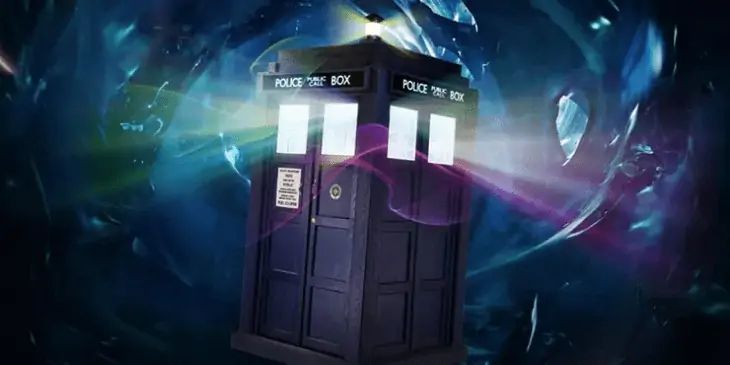
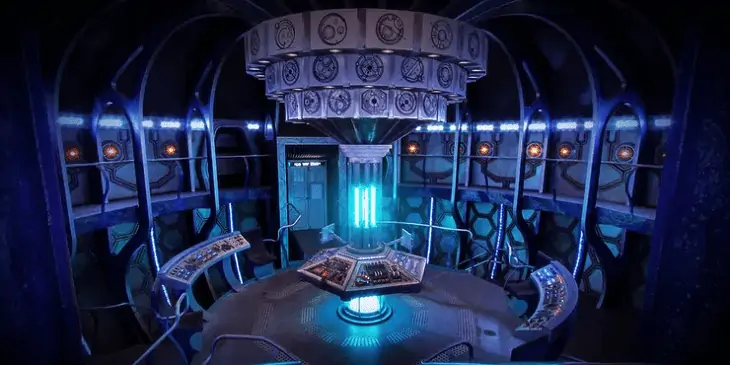
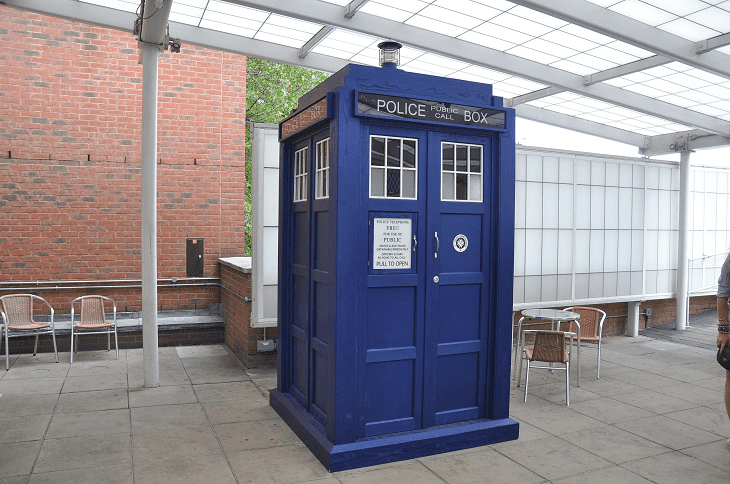
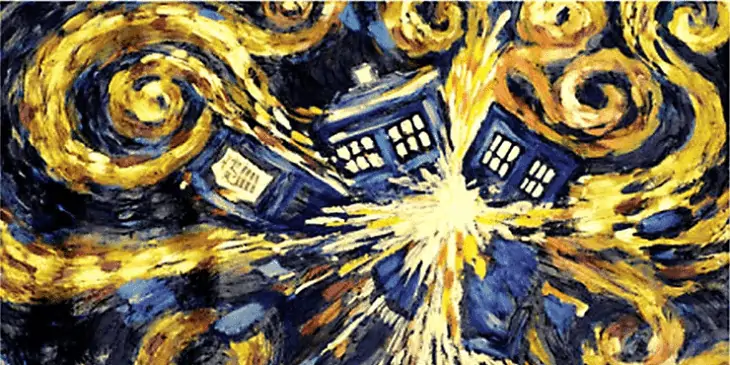

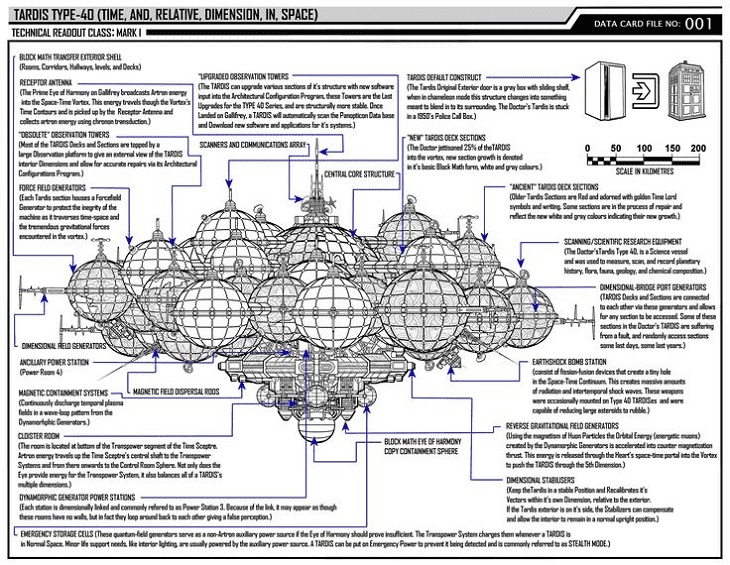
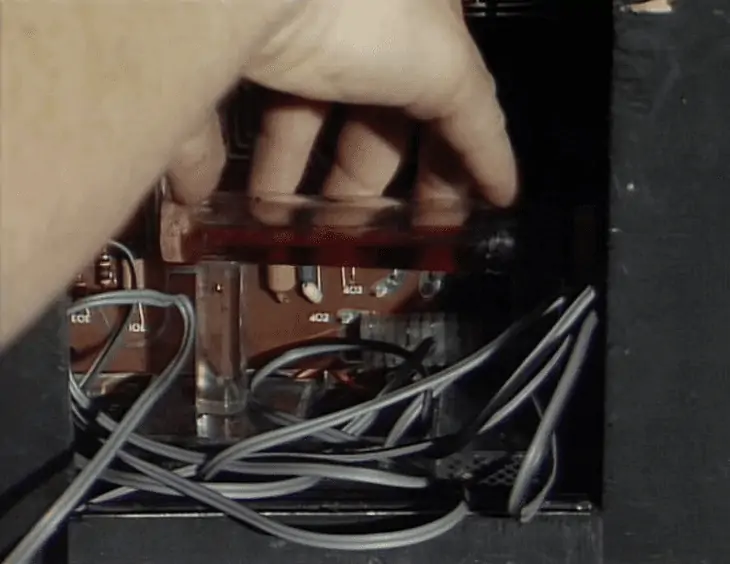
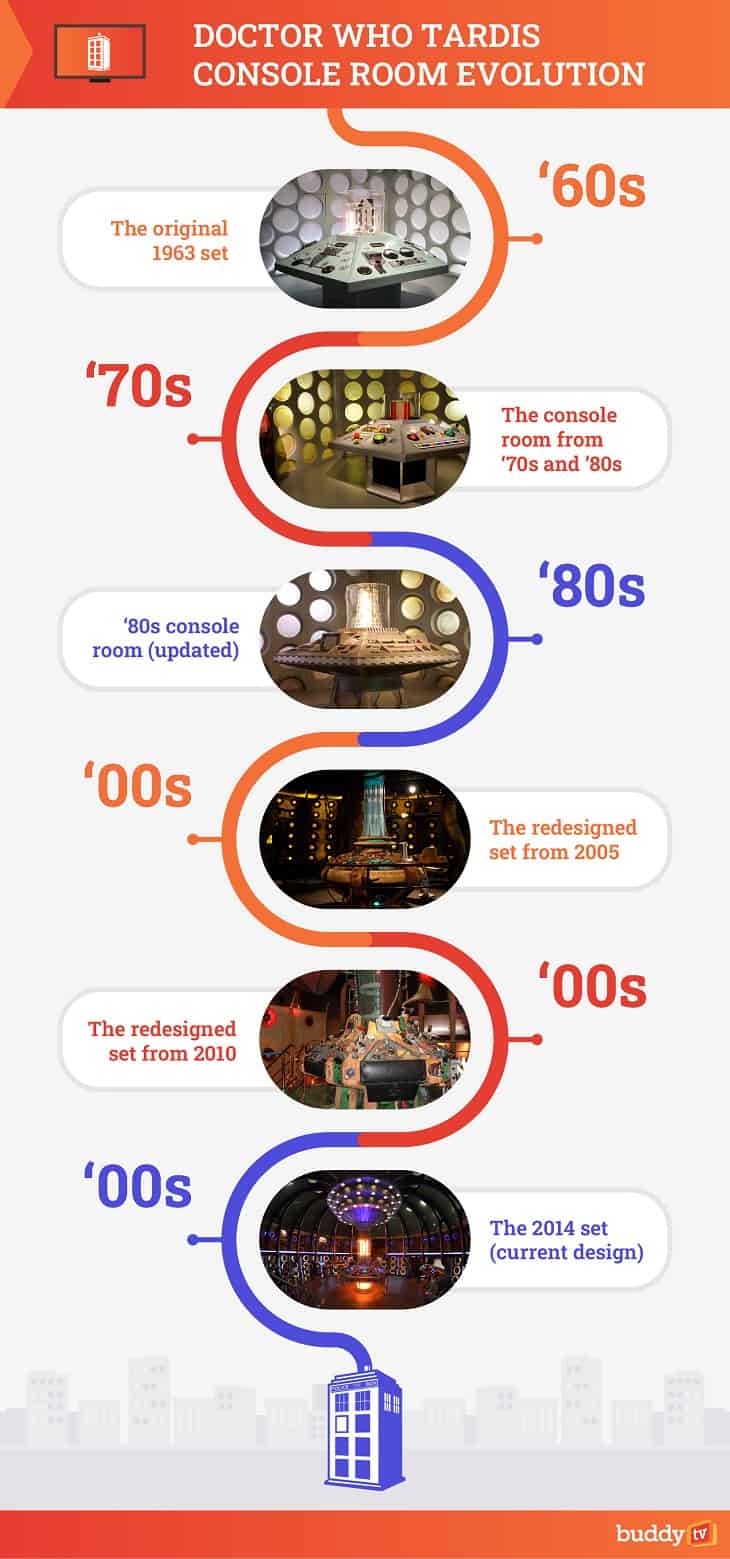


![The Hunger Games Movies In Order [How to Watch]](https://www.buddytv.com/wp-content/uploads/2022/07/the-hunger-games-moves-in-order.jpg)



